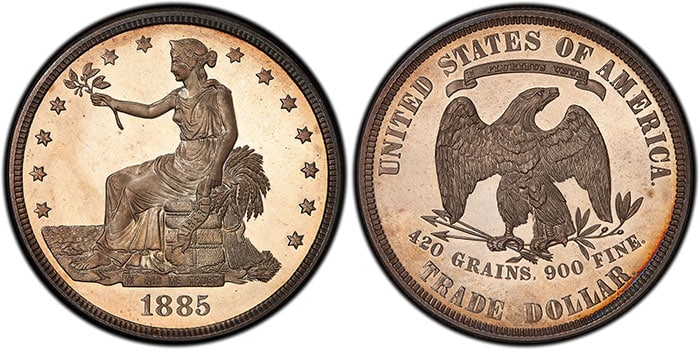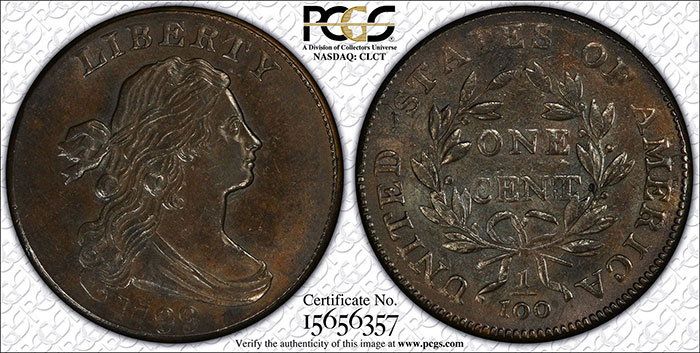By Kyle Knapp for PCGS ……
Any introduction to coin grading begins with broad, theoretical descriptions of each grade category: mostly full rims for “Good”, generally complete lettering for “Fine”, and so on.
However, as one gains experience or begins to specialize, more issue-specific lenses are required for meaningful interpretation of the numeric grade assigned to any particular piece.
Three of the most important of these are grade distribution, the condition census, and provenance. While not always necessary to ascertain a coin’s grade on the Sheldon grading scale, associated grading distribution, condition census, and provenance data enable collectors to make more informed decisions, assist experts in authentication and grading, and add an exciting historical element to important coins.
Grade Distribution
The grade distribution for any issue describes the shape of the certified population relative to the Sheldon scale. For coins with any significant population, this distribution will be largely normal (i.e. following a bell-shaped curve). Awareness of a coin’s grading distribution invites consideration of a piece within the relevant survival and availability context and can add tangible meaning to an otherwise ethereal numeric grade.

To take a common example, the 1880-S Morgan Dollars have a roughly normal distribution with a mean numerical grade somewhere around MS64. Morgan Dollars of this date were produced in abundance, many never leaving bank and government vaults. But they were also manufactured and handled in the methods consistent with circulating coinage production and thus often incurred bag marks and other minor surface abrasions typical of such a life. Distributions for coins produced with numismatic intent — proofs or commemorative pieces, for example — are often centered about much higher grades, while those of scarcer pieces whose entire issuance entered circulation would have peaks much further down the Sheldon scale.
Condition Census
While the grade distribution considers all certified examples of a particular issue, the condition census zooms in on the right tail of the distribution, enumerating and ranking the finest-known pieces in condition order. For rare issues, this list may include the entire population: all five 1885 Trade Dollars are well known, for example. Graders use the condition census both as an authentication tool and a grading guideline. When a newly encountered piece is submitted, it can be compared to the finest extant pieces for signs of inconsistency or impairment and ranked appropriately.

Condition-census data is plentiful for some series; large cent collectors enjoy glossy, leather-bound books featuring photographic condition censuses for each Sheldon variety, while 1794 Dollars and 1802 Half Dimes have standalone reference volumes dedicated entirely to this purpose. Still, for many series, this information remains to be thoroughly sorted out — meaningful and rewarding work for a student of numismatics.
Provenance
Finally, provenance attaches a dating history to individual pieces in the condition census, identifying public appearances and changes in ownership throughout their lifetimes. Each time a piece changes hands at auction or appears as part of an important collection, a new stamp is appended to its “provenance blockchain”, adding history and romance unique to that example.

Many coins can be traced directly back to the U.S. Mint, such as the Proofs purchased at the Philadelphia Mint counter by collectors such as George Clapp and Walter Childs in the early part of the 20th century, while others can be traced to the earliest generation of American numismatic auctions in the middle of the 19th century. Well-documented provenance can aid in fraud deterrence and assist in the recovery of stolen items. PCGS uses verifiable provenance, usually in the form of unopened mint boxes, to ensure newly released coins qualify for “First Strike” and other special designations.
* * *






I have 1999coin struck twice 1999what would that be worth get back to me.??